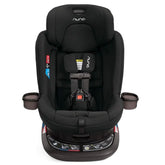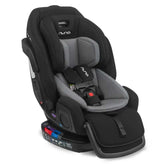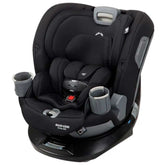13 Must-Have Safety Devices You Need for Childproofing Your Home

Childproofing your home allows your little one to have a safe environment for playing and exploring and helps prevent injuries. From the day you bring your infant home, keeping them safe takes constant vigilance. This task becomes even more challenging as your little one becomes increasingly mobile, and staying several steps ahead of them is critical.
Each year, many children are accidentally harmed inside their own homes. From burns and cuts to poisonings and drownings, a home that’s not properly childproofed can be a virtual minefield for young kids. Fortunately, there are a number of child-safety devices available that can help prevent or reduce the risk of serious harm. These devices are inexpensive and easily available in stores and online.
Childproofing safety devices should be sturdy and strong enough to limit access to danger, yet simple for a parent to use. To be effective, these devices must be properly installed following the manufacturer’s instructions. After all, it’s not unheard of for an especially tenacious child to disable them. Let’s take a closer look at some popular child safety devices and tips for childproofing your home.
1. Multiple protective layers around water
Drowning is one of the leading causes of accidental death among children. A 4-foot tall barrier fence around spas or pools along with self-latching, self-closing gates are a must. Doors leading from the house to the pool should be alarmed. The U.S. Consumer Product Safety Commission also recommends a power safety cover on the pool as well as an alarm.
2. Straps and latches for doors and drawers
These devices are essential for keeping curious toddlers out of cabinets and drawers in kitchens and bathrooms. These areas often contain household cleaners, matches, medicines, lighters, knives, and other sharp objects. Even with these straps and latches installed, it’s a good idea to store dangerous products in a locked area that is off the ground and outside the reach of small children.

3. Smoke alarms
Smoke alarms are absolutely essential on the “childproofing your home” checklist. These devices should be installed on each level of the home, within each bedroom, and outside sleeping areas to alert you to any potential fire dangers. Test alarms monthly to ensure they’re working and change batteries annually.
4. Appliance locks
Sadly, many children have died over the years by suffocation in a refrigerator or other appliance. Because these appliances are designed to be airtight when closed, a person trapped inside will have a low supply of oxygen. Many refrigerators and deep freezers can only be opened from the outside, making accidental entrapment a possibility, particularly for children playing with discarded appliances. An appliance lock is a flexible strap that allows for latching around the corner of an appliance. The secure press-and-pull lock helps keep freezers, refrigerators, microwaves, or dishwashers closed.

5. Window guards and safety netting
Window guards and safety netting help prevent falls from windows, balconies, decks, and landings. Monitor these devices often to ensure they are sturdy and securely installed. Don’t open windows more than four inches, including the space between the window guard bars. If you have window guards installed, ensure at least one window in each room can be easily accessed as an exit in the event of a fire. Window screens are not sufficient for preventing falls.
6. Safety gates
Gates keep children out of rooms that may have potentially dangerous areas and help prevent tumbles down a set of stairs. A good safety gate will be one that a child cannot effectively dislodge but an adult can open and close smoothly. A gate used at the top of stairs should screw to the wall (no pressure-mounted gates in this area). Be sure that any gate you use meets current safety standards as stated by the U.S. Consumer Product Safety Commission.
7. Carbon monoxide (CO) alarm
These alarms are designed to detect dangerous levels of carbon monoxide, an odorless gas that can be fatal. Install CO alarms near sleeping areas in your home, and change batteries annually.
8. Door knob covers
Door knob locks and covers keep curious kids from entering rooms with possible hazards. Knobs should be sturdy and still allow a door to be opened rapidly by an adult in the event of an emergency.

9. Cordless window coverings
The U.S. Consumer Product Safety Commission recommends using cordless window coverings in homes with young children in order to help prevent strangulation. Children can wrap window-covering cords around their necks or can tug on cords that may not be clearly visible but are easy to reach and become trapped in the loops. If you own blinds or window coverings made prior to 2000 and can’t afford to replace them with cordless coverings, contact the Window Covering Safety Council at 800-506-4636 or visit WindowCoverings.org for a free repair kit.
10. Corner and edge bumpers
Once your little ones are on the move, every sharp edge in your home becomes a concern. Protect them from unnecessary scrapes and bruises by adding a soft touch to tables, counters, and other furniture with soft edge bumpers. The easy-to-use adhesive strip keeps bumpers securely fastened, but removes effortlessly when no longer needed. It comes in one long strip that can be easily cut and customized to perfectly match the size of most furniture.

11. Wall and floor anchors and anti-tip brackets
Bookshelves, televisions, stand-alone cabinets, chests, desks, and even ranges can tip over and crush a small child, resulting in injury or death. It’s important to anchor heavy furniture and appliances to the floor or attach them to the wall in case a child climbs onto, falls against, or pulls themselves up on one of these heavy pieces.
12. Outlet covers and outlet plates
Outlet covers and plates devices help prevent electric shock and possible electrocution. Make sure outlet protectors cannot be easily removed by children and are big enough that they do not pose a choking hazard. If you are replacing receptacles, utilize a tamper-resistant type.
13. Anti-scald devices
Place these devices on your faucets and shower heads and set your water heater temperature to 120 degrees Fahrenheit to help reduce the possibility of burns from hot water.










